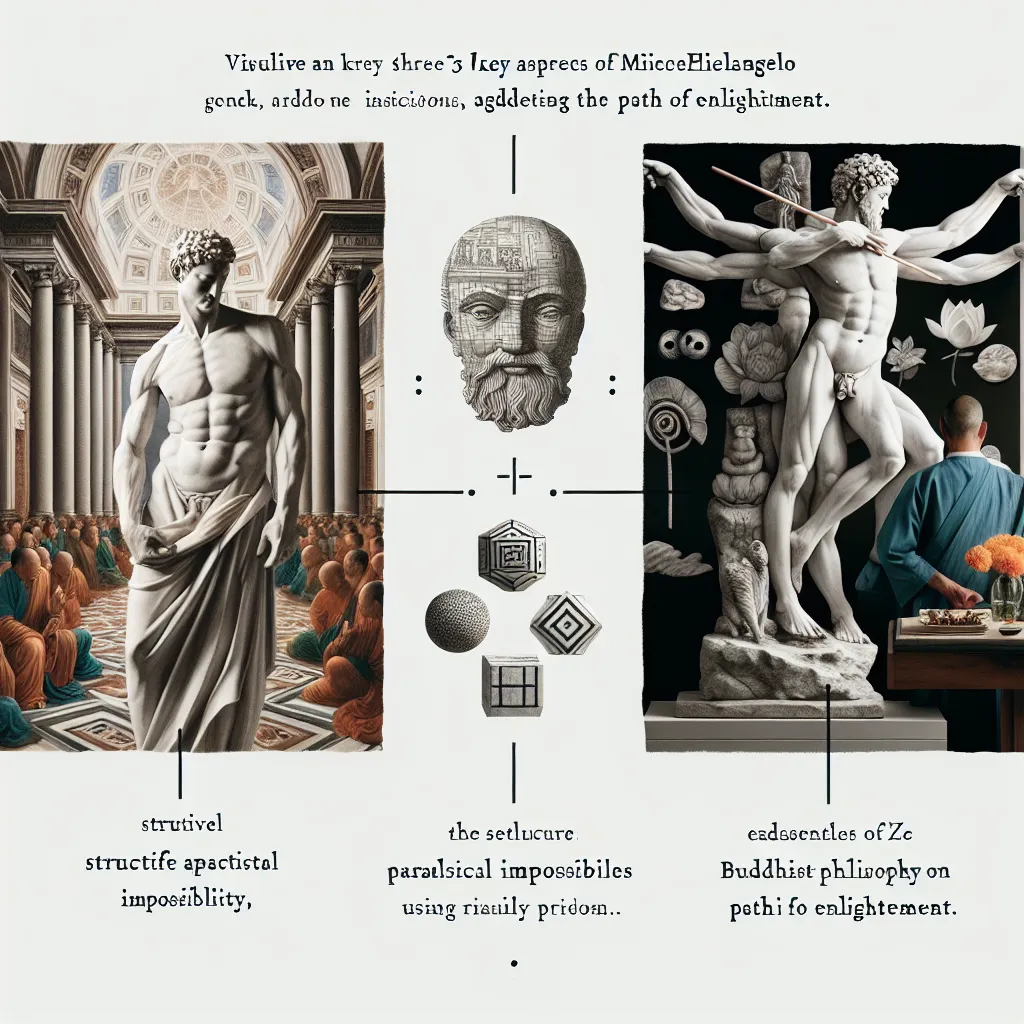
- Published on
- Authors

- Name
- You
Zen Koans: Paradoxes and Insights on the Path to Enlightenment
Zen Buddhism, a spiritual tradition that emphasizes direct experience over theoretical knowledge, uses a fascinating pedagogical tool known as the koan. Unlike the linear narratives of other spiritual teachings, koans present practitioners with paradoxical anecdotes or riddles that defy conventional logic. These enigmatic stories propel seekers beyond the limitations of intellect, paving the way to profound understanding and insight.
What is a Koan?
In its simplest form, a koan is a short story or question designed to elicit a deeper realization of reality. The term "koan" translates to "public case" in Japanese, analogous to a legal precedent. These precedents are specific encounters between a Zen master and their student, capturing a moment of profound teaching.
Table: Key Characteristics of a Koan
| Characteristic | Explanation |
|---|---|
| Paradox | Presents a contradiction to provoke deeper thinking. |
| Non-linear | Defies logical progression, pushing one beyond rationality. |
| Direct Experience | Focuses on personal, direct realization rather than theoretical understanding. |
| Transformative | Aims to fundamentally change the perception of reality. |
| Elicits Insight | Moves practitioners towards a state of sudden enlightenment. |
Zen masters have traditionally used koans as teaching instruments to challenge and destabilize the habitual cognitive patterns of their students. By wrestling with these paradoxes, practitioners develop the ability to see beyond the superficial appearances of reality.
The History of Koans
Koans trace back to the early Chán (Zen) tradition in China, before making their way to Japan in the 12th century where they flourished under the Rinzai school of Zen. They were initially collected in texts like the "The Blue Cliff Record" and "The Gateless Gate", compilations that offer hundreds of zen koans and the dialogues that accompanied them.
Purpose of Koans
Recalibrating Perception
The quintessential aim of a koan is to recalibrate the practitioner’s perception of reality. The layers of conceptual thinking that typically cloud our understanding of ourselves and the universe are dismantled through the bewildering nature of koans.
Catalysts for Enlightenment
Zen teachings often point to kensho—a moment of sudden insight or awakening. Koans act as catalysts to these moments, leveraging the inexplicability of paradox to facilitate experiences of enlightenment.
Mindfulness Practice
Engaging with a koan demands one’s full attention and presence, fostering a deep state of mindfulness and contemplation. This active engagement not only deepens one’s meditation practice but also integrates the koan’s lessons into daily life.
Famous Koans and Their Insights
Koans are often cryptic, and understanding them requires delving beyond the literal meaning. Below are some famous examples:
“What is the sound of one hand clapping?”
This well-known koan, attributed to Hakuin Ekaku, seems nonsensical. However, it invites practitioners to transcend their usual ways of knowing and perceiving. Instead of seeking a factual answer, one must directly experience the essence of the question.
“If you meet the Buddha on the road, kill him.”
This provocative statement challenges practitioners to understand that any concept of the Buddha they hold is a mental fabrication. True enlightenment comes from shedding all preconceived notions.
“Does a dog have Buddha nature?”
A monk asked Zhaozhou, “Does a dog have Buddha nature or not?” Zhaozhou replied, “Mu,” which means "no" or "nothing". The monk's question touches on a core principle of Buddha nature, while Zhaozhou's response disrupts binary thinking, urging contemplation.
The Science of Paradox
Cognitive Dissonance
From a psychological perspective, koans introduce cognitive dissonance—the discomfort one feels when confronted with conflicting ideas. This state of dissonance can drive individuals to resolve these paradoxes by shifting their mindset.
Neurology and Insight
Neuroscientific studies have shown that as practitioners engage with koans, there is a distinct activation in the brain’s anterior cingulate cortex—an area associated with error detection and conflict. This neurological activity highlights how koans foster novel cognitive processes that lead to insight.
Practices for Engaging with Koans
Zazen (Seated Meditation)
The most effective way to work with koans is through zazen. Seated meditation creates a still and receptive mind, ready to engage with the subtleties of the koan.
Sanzen (Teacher Consultation)
Regular consultation with a Zen teacher, or sanzen, ensures that the practitioner’s engagement with the koan remains pointed and fruitful. These interactions guide the practitioner towards deeper understanding and eventual realization.
Conclusion
Koans serve as vital tools in the Zen tradition for navigating the labyrinth of the human mind. By confronting us with seemingly insurmountable paradoxes, they push us beyond our limits of understanding, enabling glimpses into the profound truths of reality. Though rooted in ancient wisdom, the lessons of koans are timeless, continuously offering profound insights on the path to enlightenment. Engage with them patiently and earnestly, and you may find the veils of illusion falling away to reveal the true nature of life and existence.
Remember:
“The only way to make sense out of change is to plunge into it, move with it, and join the dance.” - Alan Watts
Happy contemplating!
